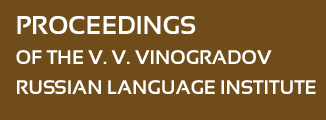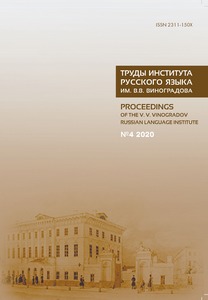PHONETIC AND ORTHOGRAPHIC PECULIARITIES OF RUSSIAN PARALINGUISTIC UNITS
Abstract:
In oral multimodal communication, verbal and non-verbal language signs (gestures, facial expressions, postures and paralanguage units) interact closely. The paper deals with phonetic and graphic features of Russian paralanguage units of different seman tic classes. The authors examine different variants of paralinguistic sequences including onomatopoeia, reduplication of vocals and consonants, prolongation of sounds within verbal units.
Various problems concerning codification and normalization of paralinguistic units are considered, and the reasons of different fluctuations in paralinguistic sphere are discussed.
We examine the reasons that influence phonetic and orthographic changes in para language such as physiological, psychological, social, cultural etc. Each type of changes leads to certain fluctuations in the composition of paralinguistic sequences. Many paralinguistic units present reliable symptoms of individual diseases or current emotional states of a person.
Almost every paralinguistic sequence corresponds to the lexical unit of Russian (eg. av-av, gav-gav — gavkat’, layat’). Some pages of the paper are devoted to important problems concerning the relationship between linguistic and paralinguistic units.


